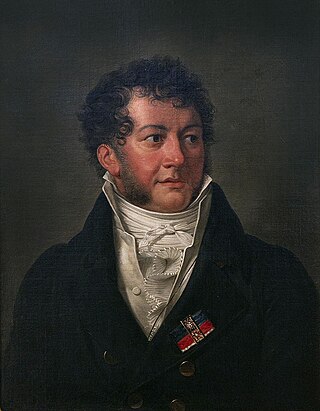Events
| | This section needs expansion. You can help by adding to it. (October 2015) |
| Years in Poland: | 1785 1786 1787 1788 1789 1790 1791 |
| Centuries: | 17th century · 18th century · 19th century |
| Decades: | 1750s 1760s 1770s 1780s 1790s 1800s 1810s |
| Years: | 1785 1786 1787 1788 1789 1790 1791 |
Events from the year 1788 in Poland
| | This section needs expansion. You can help by adding to it. (October 2015) |
| | This section needs expansion. You can help by adding to it. (October 2015) |
| | This section needs expansion. You can help by adding to it. (October 2015) |

The Constitution of 3 May 1791, titled the Governance Act, was a constitution adopted by the Great Sejm for the Polish–Lithuanian Commonwealth, a dual monarchy comprising the Crown of the Kingdom of Poland and the Grand Duchy of Lithuania. The Constitution was designed to correct the Commonwealth's political flaws. It had been preceded by a period of agitation for—and gradual introduction of—reforms, beginning with the Convocation Sejm of 1764 and the ensuing election that year of Stanisław August Poniatowski, the Commonwealth's last king. It is the second constitution in history, after that of the United States.

Julian Ursyn Niemcewicz was a Polish poet, playwright and statesman. He was a leading advocate for the Polish–Lithuanian Commonwealth's Constitution of 3 May 1791.

Prince Adam Kazimierz Czartoryski was an influential Polish aristocrat, writer, literary and theater critic, linguist, traveller and statesman. He was a great patron of arts and a candidate for the Polish crown. He was educated in England and after his return to Poland in 1758, he became a member of the Sejm (parliament), Crown General of Podolia and Marshal of General Confederation of Kingdom of Poland.

The Great Sejm, also known as the Four-Year Sejm was a Sejm (parliament) of the Polish–Lithuanian Commonwealth that was held in Warsaw between 1788 and 1792. Its principal aim became to restore sovereignty to, and reform, the Commonwealth politically and economically.

Count Stanisław Małachowski, of the Nałęcz coat-of-arms was a Polish statesman, the first Prime Minister of Poland, a member of the Polish government's Permanent Council (1776–1780), Marshal of the Crown Courts of Justice from 1774, Crown Grand Referendary (1780–1792) and Marshal of the Four-Year Sejm (1788–1792).

Prince Kazimierz Nestor Sapieha (1757–1798) was a Polish-Lithuanian noble (szlachcic) and one of the creators of the 3 May Constitution.

Sztutowopronounced[ʂtuˈtɔvɔ] is a village in Nowy Dwór Gdański County, within the Pomeranian Voivodeship of northern Poland. It is located about 38 km (24 mi) east of Gdańsk on the northeastern edge of the Vistula Delta, at the base of the Vistula Spit on the Baltic coast.

Michał Kleofas Ogiński was a Polish diplomat and politician, Grand Treasurer of Lithuania, and a senator of Tsar Alexander I. He was also a composer of early Romantic music.

Franciszek Ksawery Lampi, also known as Franz Xaver Lampi, was a Polish Romantic painter born in Austria of ethnic Italian background. He was associated with the aristocratic circle of the late Stanisław II Augustus, the last Polish king before the foreign partitions of Poland. Lampi settled in Warsaw around 1815 at the age of 33, and established himself as the leading landscape and portrait artist in Congress Poland soon after Napoleon's defeat in Russia.

Carl Gotthard Langhans was a Prussian master builder and royal architect. His churches, palaces, grand houses, interiors, city gates and theatres in Silesia, Berlin, Potsdam and elsewhere belong to the earliest examples of Neoclassical architecture in Germany. His best-known work is the Brandenburg Gate in Berlin, national symbol of today’s Germany and German reunification in 1989/90.

Michał Kazimierz Ogiński was a Polish-Lithuanian nobleman, politician, musician, composer and military officer.

Józef Rufin Wybicki was a Polish nobleman, jurist, poet, political and military activist of Kashubian descent. He is best remembered as the author of "Mazurek Dąbrowskiego", which was adopted as the Polish national anthem in 1927.

Reichsgraf Otto Magnus von Stackelberg (1736–1800) was a diplomat of the Russian Empire. He served as an envoy in Madrid from 1767 to 1771, ambassador in the Polish–Lithuanian Commonwealth from 1772 to 1790 and in Sweden from 1791 to 1793.

Jan Krzysztof Kluk was a Polish naturalist agronomist and entomologist.

Linkowo is a village in the administrative district of Gmina Kętrzyn, within Kętrzyn County, Warmian-Masurian Voivodeship, in northern Poland. It lies approximately 8 kilometres (5 mi) west of Kętrzyn and 62 km (39 mi) north-east of the regional capital Olsztyn.
Franciszek Ksawery Chomiński was a Polish soldier, politician, translator and poet. Sejm deputy, deputy to the Lithuanian Tribunal and voivode of Mscislaw from 1788 in the Polish–Lithuanian Commonwealth, and marshal of the Grodno Governorate in the Russian Empire after partitions of Poland.

The 1788–1789 United States Senate elections were the first U.S. Senate elections following the adoption of the Constitution of the United States. They coincided with the election of George Washington as the first president of the United States. As these elections were prior to the ratification of the Seventeenth Amendment in 1913, senators were chosen by state legislatures.
There were several special elections to the United States House of Representatives in 1923, spanning the 67th United States Congress and 68th United States Congress.

The 1788 Vermont Republic gubernatorial election took place throughout September, and resulted in the re-election of Thomas Chittenden to a one-year term.
![]() Media related to 1788 in Poland at Wikimedia Commons
Media related to 1788 in Poland at Wikimedia Commons